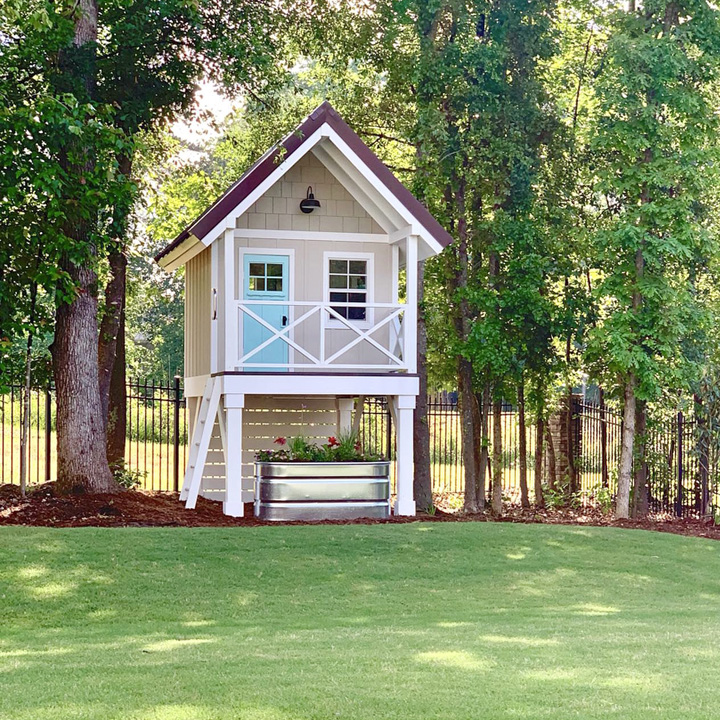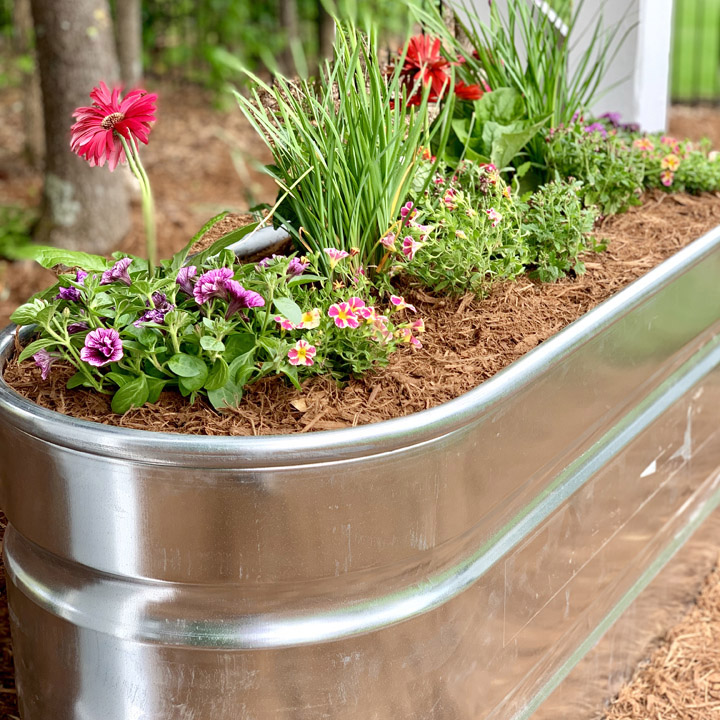
Making raised bed planters that look good can be a really time consuming process. There are a few items that can be easily be repurposed into a planter and a metal water trough is one of the nicest looking and most cost effective solutions out there! Also called stock tanks these containers are typically filled with water and used to give livestock a cool drink. Due to their galvanized coating these containers can last for years and come in a large number of sizes.
Tools and Materials (click for links)
- Galvanized water trough
- Cordless drill
- 1/8″ cobalt drill bit
- Six foot level
- Landscape fabric
- Large gravel
- Top soil
- Slow release fertilizer
Where exactly can you get a large metal water trough? If you want to order online you can find a few on Amazon. I found mine at a local agricultural supply company called Agri Supply. They clearly sell a lot of these things but when I mentioned that I wanted to turn it into a planter a few of the employees had not heard of that and were interested to see the final product!
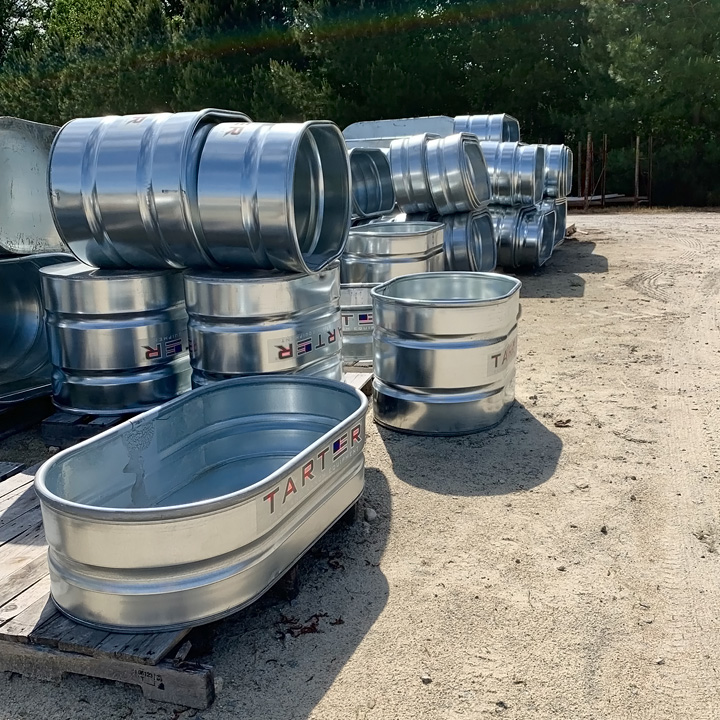
These things come in a lot of different heights (12″, 18″ and 24″ being the most common) and widths (usually in foot increments up to about six feet). I paid about $125 for a 2’x2’x5′ trough. Not too bad for a planter of that size! It came with a big sticker logo on the front, but it was easily removed in one piece. Once I got it home the first step was to add drainage holes to the bottom. I used my cordless drill and a 1/8″ drill bit. Whenever I am drilling through steel I make sure to use a hardened Cobalt bit, because a regular bit will dull very quickly.
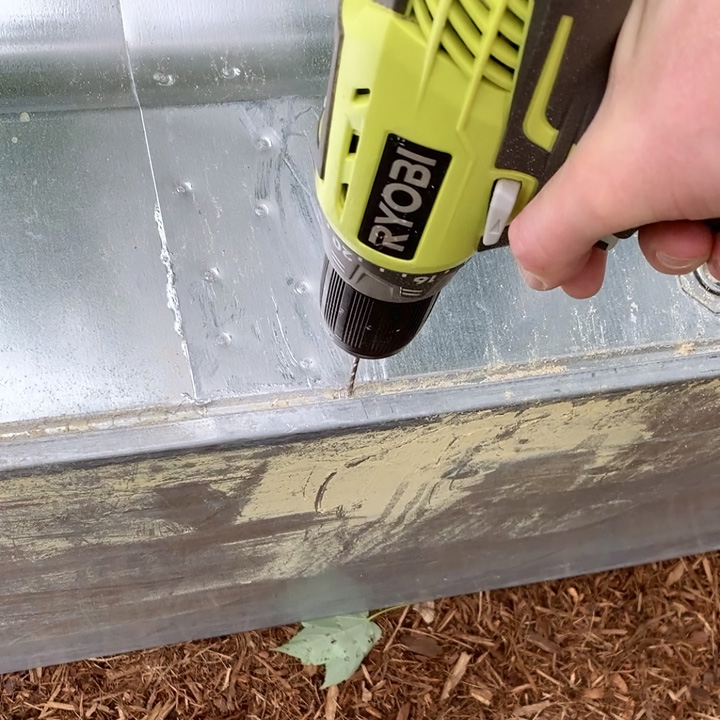
I drilled approximately 10 holes around the perimeter and 10 holes in the bottom. A good planter will have plenty of drainage to make sure the soil does not stay saturated and rot out the plant roots. Once I got it set up in front of the playhouse the first step was to make sure the base of soil underneath the planter was flat and level. I used my six foot bubble level for this purpose.
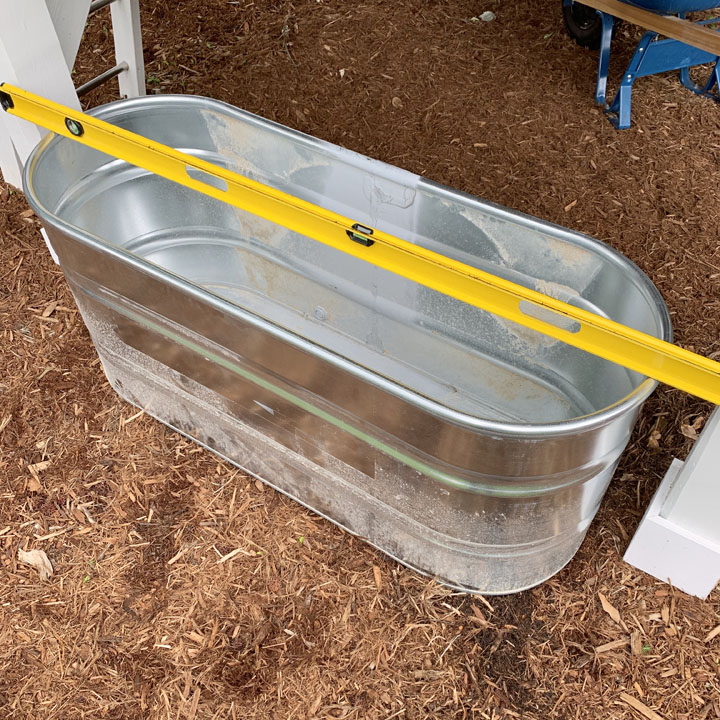
I used a hand held shovel to remove and add soil in the necessary locations until it was sitting flat across the base. This is important because the weight of soil and water will be large and might deform the trough if it does not have a stable base. If you put soil directly in the trough, it can clog of up the drain holes so I added a few components to the bottom to facilitate drainage. The first layer was course gravel.
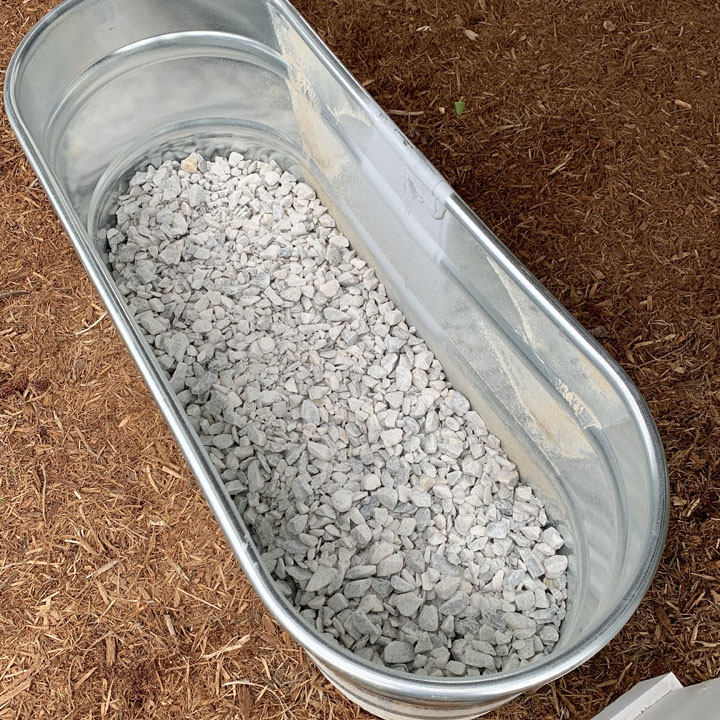
I bough a few bag of the cheapest stuff I could find at Home Depot, enough to cover all the holes that I drilled in the sides of the trough. The gravel will keep free space open around the holes and keep the water flowing! Over time the soil would work its way down the through the gravel so to prevent that, I added a layer of thick weed barrier fabric on top.

I have seen others add large objects to the bottom on this type of trough planter (planter pots, styrofoam blocks etc) to reduce the amount of soil needed, but regular top soil is pretty cheap and I don’t plan on moving this planter any time soon, so I just filled it to the top with topsoil.
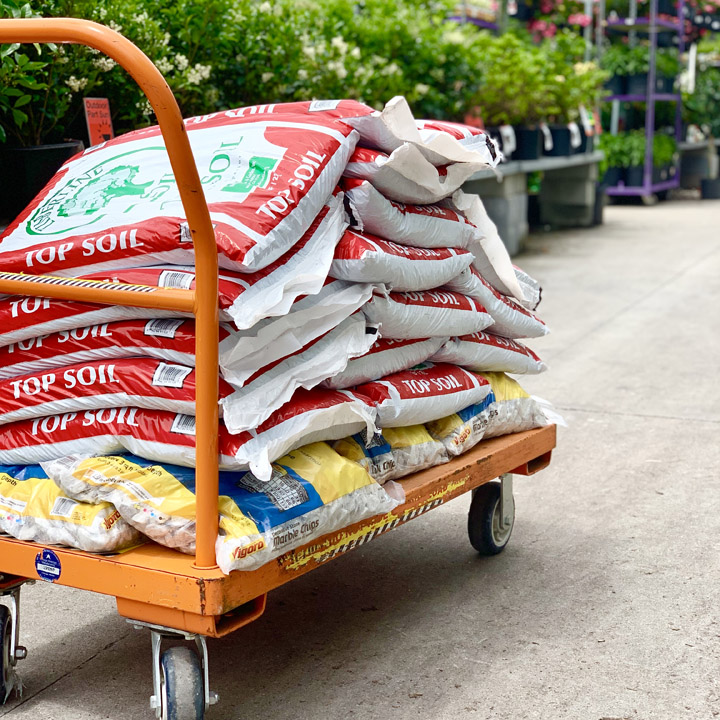
I guessed pretty well because it took exactly 15 – 1 cubic foot bags to fill it. I sprinkled some slow release fertilizer into the top 1/3 of the soil while filling to make sure we got vigorous growth as soon as we planted. After filling it the whole family had fun planting all of the flowers that we bought the same day. With that depth of soil you can plant pretty much anything, but we decided on mostly annuals so that our planter would be flowering all summer long! I can confirm that the annuals have done great after a full hot summer and the planter holds so much water that I have only used supplemental water from a hose about 10 times (about every four days when it hasn’t rained for a while).
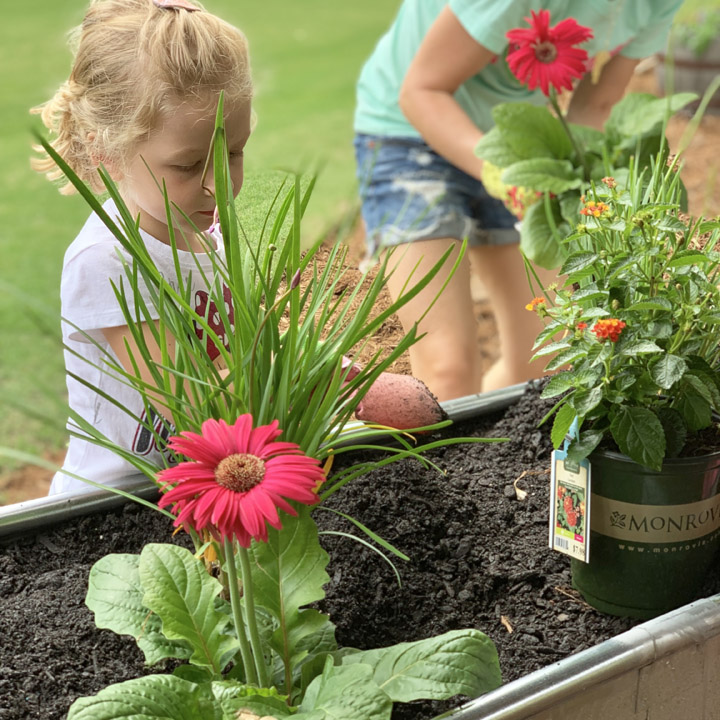
It is good to select a few different types of plants to give a lot of visual interest. Check the tags to see how large they will get and plant the larger ones towards the back. You can use multiple metal water troughs to fill larger spaces and even use ones of different heights in a tiered configuration to really maximize planting space. I hope you enjoy your new DIY planter for years to come!
